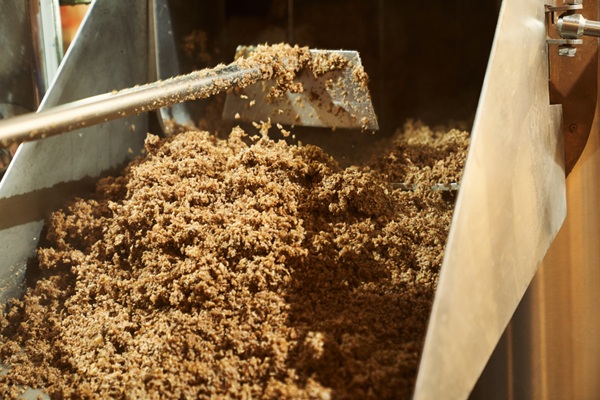In Black Soldier Fly (BSF) farming, most conversations gravitate toward bioconversion, larvae yields, or the promise of circularity. Yet, one of the factors that most determines whether a BSF operation succeeds or struggles is far less glamorous: feedstock.
At FreezeM, we’ve worked with BSF farmers across diverse geographies and operational models. Time and again, we see the same pattern: the farms that thrive are the ones that treat feedstock not as an afterthought or a passive input, but as a central pillar of strategy. This article is a deep dive into why feedstock is the real battleground in BSF farming and how shifting your perspective upstream can unlock new levels of efficiency and profitability.
Feedstock Cost Dominates Your Unit Economics
It’s tempting to focus on yield optimization or capital efficiency. But when you break down the economics of BSF production, one thing is clear: feedstock is the leading operational cost driver.
Feedstock represents the largest single component of rearing costs.
Between collection, transport, storage, handling, and preprocessing, even “free” waste comes with a cost. Small differences in feedstock cost per kilogram compound rapidly across tons of daily intake, turning margins razor-thin or comfortably wide.
Waste Proximity = Profit Potential
The closer your operation is to a steady, high-volume waste stream, the better your economics. Why? Because hauling organic waste is expensive, logistically complex, and often constrained by local regulations.
The larvae should go to the waste, not the other way around.
Whether you’re sourcing food scraps, agri-waste, or industrial byproducts, locality isn’t a bonus; it’s a necessity for scalability. Distributed rearing networks can help bridge that gap by enabling local processing without requiring a full-scale facility at every site.
The Best Feedstock Is the Least Wanted
Paradoxically, the most profitable feedstock is often the one no one else wants. Waste that’s too wet, too variable, or too contaminated for traditional valorization pathways might be ideal for BSF if handled correctly.
That’s where BSF farming shines: in valorizing the undervalued. The key is understanding what your larvae can thrive on and engineering preprocessing solutions to manage variability. Additionally, seasonal waste streams can be utilized by designing “seasonal recipes” that adapt to the available waste.
This is less about finding “perfect” waste and more about building systems that work with imperfection.
Hidden Costs: Handling, Sorting, Preprocessing
Feedstock isn’t just a line item. It’s a series of operational steps that affect your throughput, labor needs, contamination risk, and ultimately, larvae performance.
Many farms underestimate these “invisible” costs. But the difference between a farm that efficiently and rapidly converts low-cost waste into value, and one that spends too much time and money on preprocessing can make or break an operation.
A strong feedstock strategy considers not just the raw material, but everything it takes to make it usable.
Free Waste Is Rarely Free
Yes, some waste generators will pay you to take their byproducts. But in most cases, free feedstock still requires logistics, labor, compliance, and storage, and someone has to foot that bill.
Moreover, feedstock sourcing often involves navigating partnerships, contracts, and local politics. The operational complexity of waste sourcing is frequently underestimated, especially by new entrants. The more fragmented your supply chain, the more risk and cost you assume.
If your feedstock costs too much to move or prepare, your margins will disappear long before your larvae reach harvesting.
Not All Waste Is BSF-Compatible
Finally, let’s dispel the myth: BSF larvae are resilient, but not omnivorous.
Feedstock composition matters. Some materials, especially those with high salt content, heavy metals, or chemical residues, are not suitable for larvae or the downstream value chain (e.g., feed or fertilizer).
Just because a waste stream is available doesn’t mean it’s usable.
Consistency is key—not just in what your larvae consume, but in what your buyers expect. That means designing your feedstock strategy with both larval biology and product compliance in mind.
Why at FreezeM We Care About Feedstock
If BSF farming is about turning waste into value, then feedstock is where that value begins. Your supply chain, your operations, your margins—all hinge on how well you manage it.
At FreezeM, we design our breeding solutions around a feedstock-first reality. Leveraging insights from deployments across multiple countries, we support our partners in formulating optimized feed blends, ensuring nutritional balance, regulatory compliance, and cost efficiency. This enables BSF operations to scale sustainably and reliably.
At first, it may seem unexpected for a breeding company to focus so heavily on feedstock strategy. But the connection is clear.
At FreezeM, we support farms with consistent, high-quality neonates. But we’ve learned that even the best larvae can’t compensate for poor feedstock strategy. Feedstock isn’t just a cost, it’s a competitive advantage when managed correctly.
Looking to make the most of your local waste streams?

